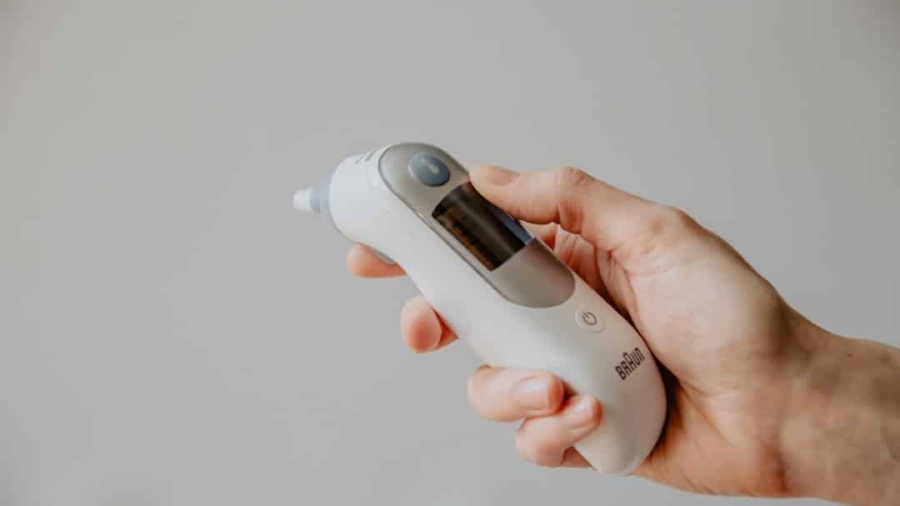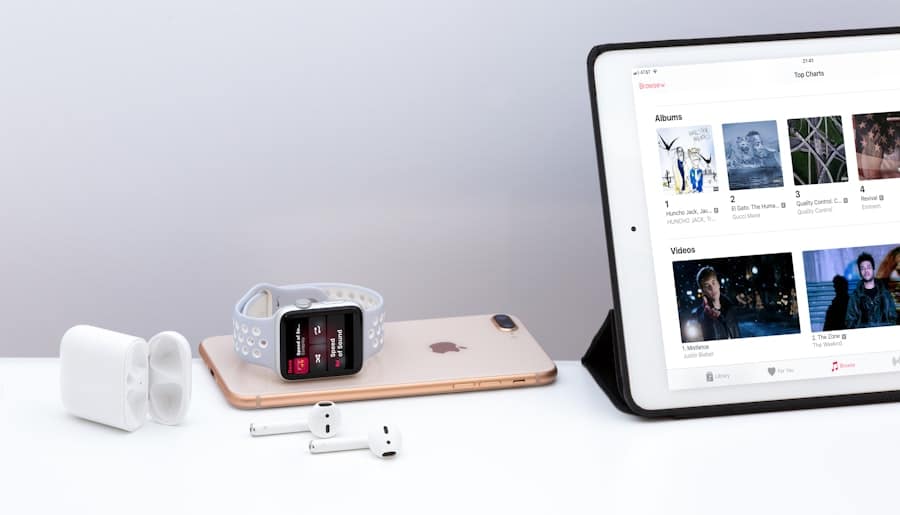In recent years, the landscape of athletic performance and health management has been transformed by technological advancements, particularly in the realm of wearable devices. Among these innovations, wearable blood sugar monitors have emerged as a pivotal tool for athletes, enabling them to track their glucose levels in real-time. This technology is not just a boon for those with diabetes; it has become increasingly relevant for athletes across various sports who seek to optimize their performance and maintain their overall health.
By providing continuous glucose monitoring, these devices allow athletes to make informed decisions about their nutrition, training, and recovery strategies. The integration of wearable blood sugar monitors into athletic training regimens signifies a shift towards a more data-driven approach to sports. Athletes are no longer solely reliant on traditional methods of gauging their energy levels or nutritional needs; instead, they can access precise data that reflects their physiological state.
This capability is particularly crucial during intense training sessions or competitions when maintaining optimal blood sugar levels can significantly impact performance. As the demand for personalized health solutions grows, the role of wearable technology in sports continues to expand, promising a future where athletes can harness data to enhance their capabilities.
Key Takeaways
- Wearable blood sugar monitors are becoming increasingly popular among athletes for real-time monitoring of their blood sugar levels during physical activity.
- Monitoring blood sugar levels is crucial for athletes to optimize performance, prevent hypoglycemia, and manage their energy levels effectively.
- Wearable blood sugar monitors work by continuously measuring glucose levels in the interstitial fluid and transmitting the data to a connected device for analysis.
- The benefits of using wearable blood sugar monitors for athletes include improved performance, better energy management, and reduced risk of hypoglycemia during intense workouts.
- Despite their benefits, wearable blood sugar monitors for athletes also come with challenges and limitations, such as accuracy issues and discomfort during prolonged use.
The Importance of Monitoring Blood Sugar Levels for Athletes
The Risks of Hypoglycemia
When an athlete’s blood sugar dips too low, a condition known as hypoglycemia can occur, resulting in symptoms such as dizziness, confusion, and weakness.
The Importance of Monitoring Blood Sugar
Understanding and managing blood sugar levels is critical for athletes aiming to achieve their best. Moreover, the importance of monitoring blood sugar extends beyond immediate performance concerns. Chronic mismanagement of glucose levels can lead to long-term health issues, including insulin resistance and metabolic syndrome.
How Wearable Blood Sugar Monitors Work
Wearable blood sugar monitors utilize advanced sensor technology to provide real-time data on glucose levels. These devices typically employ a small sensor that is inserted just beneath the skin, often on the arm or abdomen. The sensor measures glucose levels in the interstitial fluid—the fluid that surrounds cells—rather than directly from the bloodstream.
This method allows for continuous monitoring without the need for frequent finger pricks, which can be both painful and inconvenient. The data collected by these sensors is transmitted wirelessly to a paired smartphone or smartwatch application. Athletes can view their glucose levels in real-time, set alerts for when their levels fall outside of a predetermined range, and analyze trends over time.
Many devices also offer integration with other fitness tracking applications, allowing athletes to correlate their glucose data with other metrics such as heart rate, activity level, and caloric intake. This comprehensive approach enables athletes to gain insights into how their body responds to various training regimens and dietary choices.
Benefits of Using Wearable Blood Sugar Monitors for Athletes
The advantages of using wearable blood sugar monitors are manifold. One of the most significant benefits is the ability to make data-driven decisions regarding nutrition and hydration strategies. For instance, an athlete may notice that their glucose levels tend to drop during high-intensity workouts.
With this information, they can adjust their pre-workout meals or snacks to include more carbohydrates or fast-acting sugars to maintain energy levels throughout their training sessions. Additionally, these devices can enhance recovery strategies post-exercise. Monitoring glucose levels after workouts can help athletes determine whether they are replenishing glycogen stores effectively.
If an athlete finds that their blood sugar remains low after training, they may need to increase their carbohydrate intake during recovery meals. This level of insight allows for a more tailored approach to nutrition that can lead to improved recovery times and overall performance. Another notable benefit is the psychological reassurance that comes with continuous monitoring.
Athletes often experience anxiety related to performance and health; knowing that they have access to real-time data can alleviate some of this stress. This peace of mind allows them to focus more on their training and competition rather than worrying about potential energy crashes or health issues.
Challenges and Limitations of Wearable Blood Sugar Monitors for Athletes
Despite the numerous benefits associated with wearable blood sugar monitors, there are challenges and limitations that athletes must consider. One significant issue is the accuracy of these devices. While many wearable monitors provide valuable insights, they may not always be as precise as traditional blood glucose meters.
Factors such as sensor calibration, skin temperature, and hydration levels can affect readings, leading to discrepancies that could misguide an athlete’s decisions regarding nutrition and training. Another challenge is the potential for data overload. With continuous monitoring comes a wealth of information that can be overwhelming for some athletes.
Interpreting this data requires a certain level of understanding and expertise; without proper guidance, athletes may misinterpret trends or fail to act on critical insights. Additionally, the reliance on technology can sometimes detract from an athlete’s intuitive understanding of their body’s signals. Striking a balance between data-driven decision-making and listening to one’s body is essential for optimal performance.
Moreover, the cost associated with wearable blood sugar monitors can be prohibitive for some athletes. While prices have been decreasing as technology advances, high-quality devices still represent a significant investment. This financial barrier may limit access for amateur athletes or those competing at lower levels who could benefit from such technology.
Tips for Athletes Using Wearable Blood Sugar Monitors
For athletes looking to maximize the benefits of wearable blood sugar monitors, several practical tips can enhance their experience and effectiveness. First and foremost, it is crucial to familiarize oneself with the device’s features and functionalities. Understanding how to calibrate the sensor properly and interpret the data accurately will ensure that athletes can make informed decisions based on reliable information.
Athletes should also establish a routine for monitoring their glucose levels throughout different phases of training and competition. For example, tracking glucose before, during, and after workouts can provide insights into how different activities affect energy levels. Keeping a detailed log of these readings alongside notes on diet and exercise can help identify patterns over time.
Additionally, it is beneficial for athletes to consult with healthcare professionals or sports nutritionists who have experience with glucose monitoring technology. These experts can provide personalized advice on how to interpret data effectively and integrate it into training regimens. They can also help athletes develop tailored nutrition plans that align with their specific needs based on their glucose trends.
Case Studies: Athletes Using Wearable Blood Sugar Monitors
Several high-profile athletes have embraced wearable blood sugar monitors as part of their training regimens, showcasing the technology’s potential benefits across various sports disciplines. For instance, professional triathlete Tim Don has publicly shared his experiences using continuous glucose monitoring (CGM) devices during his rigorous training sessions. By analyzing his glucose data in conjunction with his training intensity and dietary intake, Don has been able to optimize his fueling strategies for both training and competition days.
Similarly, elite marathon runner Shalane Flanagan has utilized wearable blood sugar monitors to fine-tune her nutrition during long-distance races. By closely monitoring her glucose levels during training runs and races, Flanagan has been able to identify optimal fueling windows and adjust her carbohydrate intake accordingly. This meticulous approach has contributed to her success in major marathons around the world.
These case studies illustrate how wearable blood sugar monitors can empower athletes by providing them with actionable insights that enhance performance and recovery strategies. As more athletes adopt this technology, it is likely that we will see an increasing number of success stories highlighting its impact on athletic achievement.
The Future of Wearable Blood Sugar Monitors for Athletes
The future of wearable blood sugar monitors appears promising as technology continues to evolve at a rapid pace. Innovations in sensor technology are likely to lead to even more accurate and reliable devices that provide real-time feedback without the need for invasive procedures. Researchers are exploring non-invasive methods of glucose monitoring using techniques such as spectroscopy or advanced biosensors that could revolutionize how athletes track their blood sugar levels.
By leveraging vast amounts of data collected from users, AI algorithms could identify trends and provide personalized recommendations tailored specifically to each athlete’s unique physiology and training regimen. As awareness grows regarding the importance of metabolic health in athletic performance, we may also see an increase in collaboration between tech companies and sports organizations aimed at developing specialized solutions for athletes at all levels.
This could lead to more accessible options for amateur athletes who wish to incorporate glucose monitoring into their training without facing prohibitive costs. In conclusion, wearable blood sugar monitors represent a significant advancement in athletic performance management. As technology continues to improve and become more integrated into sports science, these devices will likely play an increasingly vital role in helping athletes achieve their goals while maintaining optimal health.
In a recent article on smartwatches by Xiaomi, the benefits of wearable technology for athletes were highlighted. These devices not only track fitness metrics but also have the potential to monitor blood sugar levels, making them a valuable tool for athletes with diabetes. The integration of such features into wearable devices can greatly enhance the performance and health management of athletes, as discussed in the article on the role of wearable blood sugar monitors for athletes.
FAQs
What are wearable blood sugar monitors?
Wearable blood sugar monitors are devices that can be worn on the body to continuously monitor blood sugar levels. They are commonly used by individuals with diabetes to track their glucose levels throughout the day.
How do wearable blood sugar monitors work?
Wearable blood sugar monitors typically use a small sensor that is attached to the skin to measure glucose levels in the interstitial fluid. The sensor then transmits this data to a receiver or smartphone app, allowing the user to track their blood sugar levels in real time.
What is the role of wearable blood sugar monitors for athletes?
For athletes with diabetes, wearable blood sugar monitors can provide valuable information about their glucose levels during exercise and help them make informed decisions about managing their blood sugar while training and competing.
How can wearable blood sugar monitors benefit athletes?
Wearable blood sugar monitors can help athletes with diabetes to monitor their blood sugar levels more effectively during physical activity, allowing them to adjust their insulin doses or carbohydrate intake as needed to maintain optimal performance and prevent hypoglycemia or hyperglycemia.
Are there any limitations to using wearable blood sugar monitors for athletes?
While wearable blood sugar monitors can be a valuable tool for athletes with diabetes, it’s important to note that they may not always provide 100% accurate readings, and athletes should still be aware of their body’s signals and symptoms of low or high blood sugar levels during exercise.



